If you’re looking for a comprehensive guide on How Marvelous Mrs Maisel Perfected The Long Take, look no further. This product review blog post covers all the bases, from how to set up your shot to what mistakes to avoid. Plus, we’ve got some helpful tips from the experts themselves. So whether you’re a seasoned pro or just getting started, you’re sure to find something helpful here. So what are you waiting for? Let’s get started!
Marvelous Mrs Maisel is a show that has mastered the long take. Here’s how you can too! You’re probably familiar with the long take if you’ve seen any of Marvelous Mrs. Maisel. If not, it’s a filmmaking technique where a shot lasts for an extended period of time, often several minutes or more. And while it can be used for various purposes, the show often uses it to great effect in order to add tension, build suspense, or simply show off the beauty of the set and costumes.
The long take is a difficult but rewarding shot to perfect, and Marvelous Mrs. Maisel is a perfect example of how it can be done right. With careful planning and execution, you, too, can create a masterpiece that will leave your audience in awe.
But how do they do it? How do they make sure the shot is framed correctly and that everything goes according to plan? Well, that’s where this guide comes in. We’ll be taking a comprehensive look at how to perfect the long take, from how to set up your shot to what to do if things go wrong. Plus, we’ve got some helpful tips from the experts themselves. So whether you’re a seasoned pro or just getting started, you’re sure to find something helpful here.
One of the keys to nailing the long take is planning. You need to make sure that you have a clear idea of what you want to achieve with the shot and how you’re going to execute it. That means storyboarding the shot, blocking out the action, and making sure that everyone involved knows what they’re doing.
Of course, even with the best-laid plans, things can still go wrong. That’s why it’s important to have a backup plan in place, just in case. And if something does go wrong, don’t panic! Just stay calm and carry on. With these tips in mind, you should be well on your way to perfecting the long take like Marvelous Mrs. Maisel. So what are you waiting for? Let’s get started!
What Did You Do With The Hard Light? Is This Hard For Close-Ups And The Like?
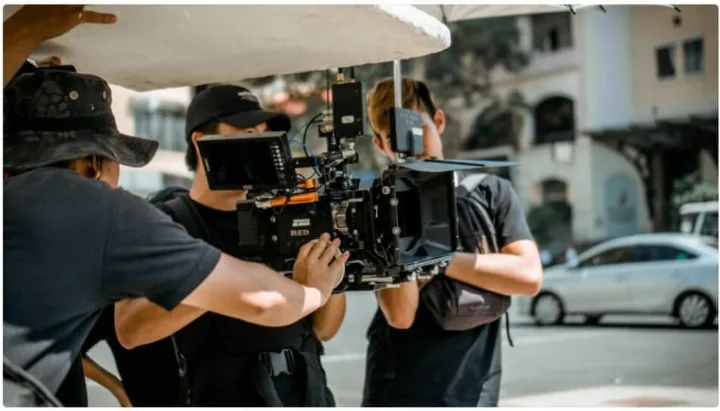
Capturing the content, the film composition is vibrant and energetic but still feels like something of a lively 50s aesthetic in terms of color scheme and design. The content abounds with historical reviews, references combined with period photography, and advertising.
The point of movies is to figure out the color perspectives and everything, and the cameras are smart.
Close-up part
Close-up shots are a great way to add tension or suspense to your film. They can also be used to focus on a character’s reaction or to create an intimate feeling. But how do you go about capturing a close-up shot? Well, that’s where this guide comes in. We’ll be taking a look at everything you need to know about capturing close-up shots, from how to frame your shot to what lens to use. Plus, we’ve got some helpful tips from the experts themselves. So whether you’re a seasoned pro or just getting started, you’re sure to find something helpful here.
One of the most important things to consider when taking a close-up shot is the framing. You want to make sure that you’re not cutting off any important parts of the subject’s face or body. That means paying attention to things like headroom and chin room. You also want to make sure that the background isn’t too busy or distracting.
Another important thing to consider is what lens to use. For close-up shots, you’ll want to use a lens with a shallow depth of field. This will help to blur the background and focus attention on the subject. A good rule of thumb is to use a lens with a focal length of 85mm or longer.
When it comes to taking the actual shot, there are a few things to keep in mind. Firstly, you’ll want to make sure that the subject is well lit. This will help to ensure that they’re properly exposed in the shot. Secondly, you’ll want to focus on the eyes. This will help to create a more intimate feeling. And finally, you’ll want to make sure that the shot is steady. This can be achieved by using a tripod or by resting your elbows on a solid surface.
With these tips in mind, you should be well on your way to taking great close-up shots.
Camera Selection
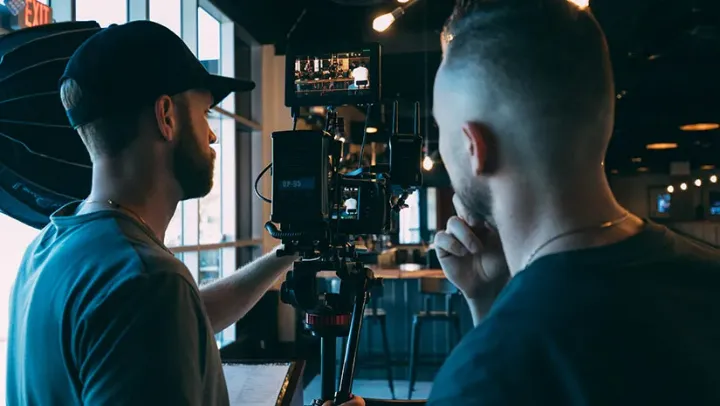
For camcorders, the most important thing is the parameters as well as the features equipped on the machine. The more special the feature, the higher the price. However, you need to pay attention to the basic elements to shoot the best quality videos. Those factors include:
– Video resolution: Currently, most cameras produce video with Full HD 1080p and 4K resolution. Some of the latest models also have ultra-sharp 8K quality. In the video tutorial, they will not often use 8K cameras because the higher the resolution, the more difficult and less flexible the post-processing will be. Besides, 4K video has less capacity, does not take much space to store, and the processing time is also shorter than 4K video.
– Frame rate: A typical video will have a recording speed of 24fps to 30fps. If you want to use special filming techniques like slow motion, then you should look into models with higher frame rates from 60fps to 120fps. After shooting at 60fps, you can lower it to 24fps for smoother post-production.
– Recording Limits: An especially important thing when choosing a camcorder is that you need to know if that version of the camera has a recording time limit. In fact, recording in high resolution will cause the device to increase in temperature by consuming more power than usual. The ability to dissipate the heat of the models will usually not be as efficient as professional machines, so you must turn it off when the heat is too high. If you find a camera with a well-designed body, the recording time will be greatly increased.
– Video sound: In addition to a sharp image, a good video needs to have vivid sound, supporting the video to fully convey the message to the viewer as well as the emotions of the performer. Therefore, checking the sound captured from the camcorder is not something to be taken lightly. The camera is better off with a separate port for connecting to an external microphone and a headphone jack for easy volume control while recording.
– AF performance: The focusing ability of each camcorder is different. Today’s most modern cameras offer high autofocus capabilities, helping videographers focus in an instant and accurately. Some models with built-in Eye AF can focus on human and animal eyes, for example, in the Nikon Z FC series.
– Image stabilization: The camera has built-in stabilization that makes images exceptionally smooth and steady. Some models such as Fujifilm X-T4, Panasonic Lumix S1, Canon EOS R6, or Sony’s A7R IIIA are all models equipped with advanced anti-vibration systems. When combined with the Gimbal, it will exert a powerful effect.
– HDR video recording: When recording video in HDR mode, the light sensitivity range is extended, and the ability to recognize the difference between light and dark, thereby reproducing more accurate colors. This camcorder with HD movie mode will produce quality footage in color and sharpness.
– Raw Output: The camera model has RAW video format that allows users to flexibly adjust brightness, white balance, and contrast after recording. However, RAW video files will take a long time to post-processing if you want the footage to be more perfect.
Lens Selection
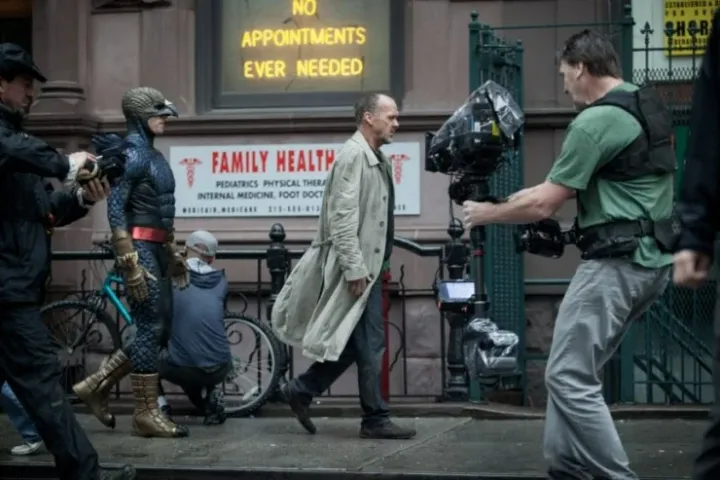
– Wide angle lens: These lenses are suitable for shooting panoramic shots, close-ups, and shooting in limited spaces. Videographers will easily hold the device for impressive perspective and depth of field (as a lot of footage is in focus simultaneously).
However, these lenses still have a major drawback that close-up images will be distorted.
– Mid-range lens: With mid-range lenses will give you natural-looking images. This lens is suitable for shooting with two people and a hip-level shot. However, if you take advantage of it for close-ups, it’s easy to get distorted images.
Remember, a wide maximum aperture makes for a shallow depth of field. If you use focus creatively, a wide aperture lens will be fine, but if you want sharp images, choose a narrower aperture lens.
– Mid-range telephoto lens or portrait lens (portrait): This type of lens will give you distortion-free close-ups. They have a wide maximum aperture that works well in low light. However, these types of lenses make it very difficult for videographers to hold the equipment, which they often put on a tripod.
Not only that, this lens seems to make the perspective evenly spread (strong graphic composition), so that you can easily add beautiful shallow depth of field effects.
If your camera has an APS-C or Super 35 sensor and a 50mm f/1.8 lens (which is the standard lens on full-frame bodies), that makes a great lens kit for the price. reasonable.
– Telephoto lens: These telephoto lenses are great for flattening perspective, isolating subjects from the background, and bringing distant objects closer. However, these types of lenses are often large, long, and heavy, making it difficult to move by hand. Videographers often put it on a tripod.
– Super wide angle lens: Choose an ultra-wide-angle lens that’s right for filmmakers when shooting multiple scenes. It is both easy to hold and has a good depth of field.
Besides, this type of lens is suitable for documentary shooting because the focus of the image is realistic and close. However, if you shoot close to the edge, it is easy to bring out a distorted image.
| Lens selection | Focal Length | Application |
| Wide angle lens | Full-frame sensor around 24 – 40mm; APS-C about 15 – 24 mm; Four – third about 10 – 17 mm. | Suitable for shooting panoramic, close-up shots as well as shooting in limited space |
| Mid-range lens | Full-frame about 50 mm; APS-C about 35 mm; Four – third 20 – 25 mm. | This lens is suitable for shooting with two people and hip-level shots. |
| Mid-range telephoto lens, or portrait lens (portrait) | Full-frame about 85 – 100 mm; APS-C about 50 – 60 mm; Four – third 35 -50 mm. | This type of lens will give you distortion-free close-ups. |
| Telephoto lens | Full-frame 135 mm or more; APS-C 85mm or higher; Four – third from 60 mm or more. | These telephoto lenses are great for flattening perspective, isolating subjects from the background, and bringing distant objects closer. |
| Super wide angle lens | Full-frame under 24mm; APS-C under 16mm; Four – third under 10 mm. | This type of lens is suitable for documentary filming. |
The Light
When you are shooting outside, especially in direct sunlight, it is necessary to use a lens hood or sunshade to protect the lens. A lens hood is a part of the lens that extends from the front and shades the lens from direct sunlight or other light sources. Sunshades are similar, but they attach to the camera body and extend outwards to shade the lens.
Some lenses have a built-in hood, while others do not. If your lens does not have a hood, you can buy one that is specific to your lens model. Or, you can improvise with materials such as black cardboard or even your hand.
It is also important to keep in mind that when you are using a long telephoto lens, the sun may be in your frame if you are not careful. This can cause a flare, which is when light reflects off the lens and causes streaks or patches of light in your image.
To avoid this, make sure the sun is not in your frame, or use a lens hood or sunshade. If you must shoot with the sun in your frame, try to position yourself so that the sun is behind you and shining on your subject.
How Marvelous Mrs Maisel Perfected The Long Take

Long Take
The long take is a great way to add visual interest to your film or video. It can also be used to create a sense of tension or suspense. There are a few things to keep in mind when using the long take. First, you need to make sure your camera is stable. This means using a tripod or some other type of stabilization system.
Second, you need to plan your shot before you start rolling. This means knowing where you want to start and end your shot, as well as what you want to include in the middle.
Third, you need to be aware of your surroundings. This means making sure there is nothing in the frame that will be a distraction.
Fourth, you need to be patient. The long take can take some time to set up, so you need to be prepared to wait
Finally, you need to be aware of your audience. The long take can be a bit boring for some viewers, so you need to make sure the rest of your film or video is interesting enough to keep them watching.
Setting Up The Scene
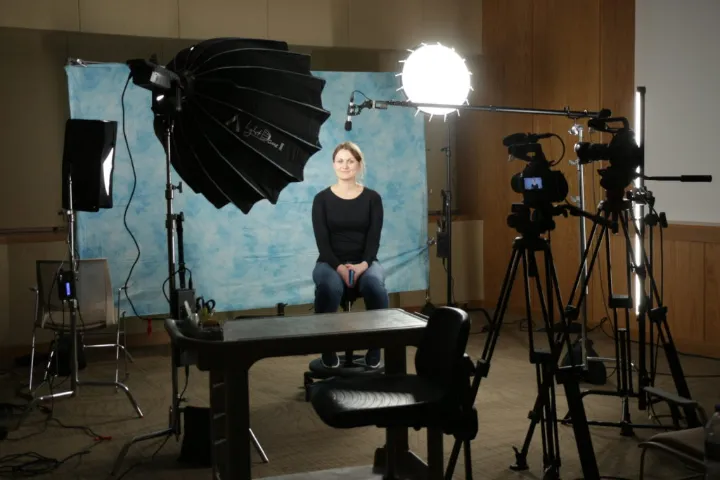
Development stage
This phase includes the following activities: writing the script, finding a director, choosing the main actors, budgeting, and planning the filming.
Pre-production stage
The producer will approve the final script, appointing a director and actors. The filming location is fixed. The director, assistant director, executive producer, and producer plan individual shots. If possible, actors will have time to practice or experience reality before filming. Producers, directors, and costume designers agree on issues such as setting the film, setting the scene, costumes for the characters, make up for the actors, and methods of lighting. shining.
Theoretically, a movie is usually shot in this fashion: from beginning to end, while a scene is shot from scene to scene. But in reality, scenes and scenes are often shot out of order as they appear in later films because the shooting process depends on many factors such as the weather, actors, and the setting in the shooting locations. . Large, difficult edits are usually filmed last, as they take up a lot of time. These scenes can be very complex. For example, in Titanic (1997), the filmmakers built luxurious living rooms, stairs, and large dining rooms on a tank with a capacity of 19 million liters of water and then used a hydraulic system to pull them down to film. shipwreck scene.
To prepare for a scene, the film crew had to go through 5 stages:
A team of technicians and actors prepares costumes, props, decorations, make-up, and set up scenes. Actors see the script, listen to the director, and just walk around. The director of photography chooses the method of creating and coordinating the lighting.
The team of sound technicians calculates the volume level, considering the solid placement of the microphones. The director coordinates the activities of the actor and other members of the crew.
Filming (Production stage)
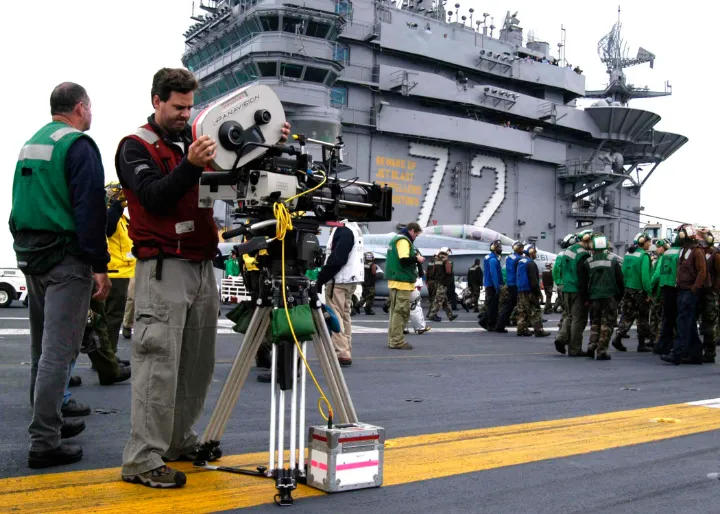
Each shot of the movie is called a take. For complex scenes such as earthquakes and battles on the battlefield, the director has to use multiple cameras to reduce the number of takes. After each take, the director confers with the cameraman and the sound mixing technician. If the actor is acting well and there are no camera and sound problems, then do another scene. If there is a problem, roll back.
It is common to shoot the wide scenes (master shots) first, then shoot the short scenes (cover shots) inserted into the wide scene to increase the visual and artistic value. Of course, the technical team edits the images and sounds of the short clips before adding the panoramas. There are many tricks used when shooting short: close-up, medium, far, moving the camera while recording, rotating the camera while recording. After each short clip, people have to reposition the camera, microphone, actors, and lighting to match the segments. For example, if the car door is open in the wide shot, the door is not closed in the far shot.
At the end of the working session, the favorite scenes will be selected. During the next meeting, the director, producer, director of photography, and image and sound editors will review the work log to decide which scenes to continue or reshoot. After filming, the director and editor merge the scenes into segments, and merge several segments into a sequence. When editing, they cut out extra scenes, directing the final texture of the film. This process is called rough cutting. After that, the rest of the scenes and segments are polished (first cut).
Post Production
The director and editor correct the mistakes. During the first cut editing process, the editor can make suggestions to the director. Producers are also involved in the process, especially when the director and editor decide to reshoot a scene because it means an increase in the budget. When the first cut is complete, the producer, along with the editor or (and) director, makes other selections (the final cut). After this stage, people will edit the sound, insert background music and mix for the movie.
Mistakes To Avoid
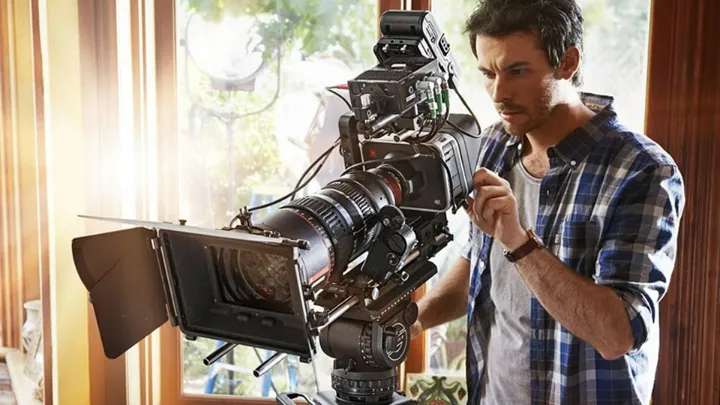
Do not rush the filming process. This can lead to mistakes that have to be corrected in post-production, which can be expensive and time-consuming.
Do not underestimate the complexity of filming a scene. The more complex the scene, the more takes you will need, which can increase the budget.
Do not forget to take into account the sound when filming. Make sure the microphone is in the right position so that you can get good quality sound.
Do not forget to edit the footage. This is an important step in the filmmaking process, as it can make or break a scene.
Do not forget to add background music. This can make a scene more emotional and help the audience connect with the characters.
Do not forget to mix the sound. This is an important step in post-production, as it can make or break a scene.
Do not forget to add effects. This can make a scene more realistic and help the audience connect with the characters.
Tips From The Expert
Make sure the actors are well-rehearsed. This will help reduce the number of takes and make the filming process smoother.
Make sure the scene is rehearsed as well. This will help reduce the number of takes and make the filming process smoother.
Make sure the camera and sound are in the right position. This will help reduce the number of takes and make the filming process smoother.
Make sure the lighting is in the right position. This will help reduce the number of takes and make the filming process smoother.
Make sure the director is happy with the take. This will help reduce the number of takes and make the filming process smoother.
Make sure the editor is happy with the take. This will help reduce the number of takes and make the filmmaking process smoother.
Make sure the producer is happy with the take. This will help reduce the number of takes and make the filmmaking process smoother.
Conclusion
Follow the link to read the blog post and learn how Marvelous Mrs Maisel perfected the long take! You’ll be taking amazing shots in no time! The long take is a complex and challenging filmmaking technique, but it can be very rewarding if done well. It takes a lot of planning and preparation, and it is important to avoid mistakes. With the right team and the right approach, the long take can be a great way to tell a story.

